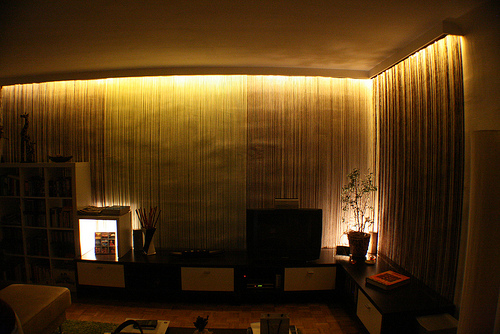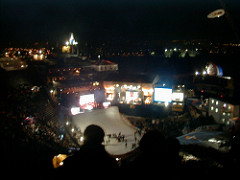Yesterday I started a blog series about the visonary path of the Semantic Desktop from Idea to product.
Here the start: Why I see the Semantic Desktop and PIM as visionary?
Why did I tag this blog post series as visionary?
For me, it started because I was having the problem of not remembering things. I could not remember the name of the girlfriend of my best friend. Greeting her “Sonja” when her name is “Anna” caused trouble for me, and my best friend, because she would ask “Who is Sonja?”. To be honest – I am also too lazy to remember everything. But with many things in life, like appointments, birthdays, or telephone numbers – everyone wants to be lazy and not remember everything, or?. In November 1996, I started taking notes and writing important facts down in both a digital diary with entries such as “Party on Friday” (I wrote my diary using AskSam, a flexible user-adaptable text database) and a detailled address book with contacts and phone numbers (“Anna”, “Sonja”).
But back then, technology was inherently broken, the tools at hand were: text files, databases, file systems, and the web. Using only this broken technology from 1996, it was not possible to “remember things by writing them down”. You think my requirements are sky-high? They are.
What I was looking for was the following: In my AskSam Diary I want to write “Today I met Anna, she is the new girlfriend of David, they met at a party of Georg on Friday”. From that moment on, the fact that Anna and David are a couple must show both in Anna’s and David’s address book entry (in Outlook), and the party at Georg must be a new event connected to both the new love relationship and Georg. That would be cool, and only that would also be satisfying. I knew information technology because I started my master courses that year (1996), and I was not aware of any standard technology to achieve this. I also had the intention to access these notes whenever I needed them – from my Palm mobile, from home, from the web. So I had a real urge to fix this and invent something we later called Semantic Desktop.
To not set the goal too easy, I knew that the overall goal must not be just a system to remembe things by writing them down, but a Cyberspace:
“Cyberspace. A consensual hallucination experienced daily by billions of legitimate operators, in every nation, by children being taught mathematical concepts. . . A graphic representation of data abstracted from the banks of every computer in the human system. Unthinkable complexity. Lines of light ranged in the non space of the mind, clusters and constellations of data. Like city lights, receding. . .”
William Gibson, Neuromancer, 1984
Why Cyberspace? It’s a 3-dimensional interface, and as humans are built by God via Evolution* to interact in 3D environments, the Cyberspace is intuitive to use by people. Cyberspace is like architecture: built by humans to serve humans. To contradict myself: building Cyberspace is of course a romantic and naive goal, and I am well aware that future information technology will look more than an Apple product than what William Gibson and Vernor Vinge described, also this is not our goal at Gnowsis.com and our product Cluug is not Cyberspace.
Still, Cluug and Gnowsis are in the world of Information Technology now and back then in 1996, if you wanted to build a global IT system like Cyberspace, you need:
- all computer services accessible through standard interfaces
(already known as HTTP protocol, since SOAP and REST a de-facto standard
for computer interaction),
- all information in the world in a coherent data model (HTML did not
do that, 1999 RDF started),
- 3D coordinates for everything for positioning and information space
architecture (not here yet, but
XML3D are working
on a RDF based representation of it and repurposing the upcoming
mobile/augmented reality standards is a good start)
- and a nice rendering for each thing (damn!).
 In
In
Vienna I was able to find the right friends in every area. To the right a
picture showing how interesting that time was – we tried out how wearable computing may work with low-tech infrastructure.
- Johannes Grenzfurthner from the Vienna based international art
collective Monochrom, running a
Cyberpunk fanzine since 1993.
- Michael Zeltner who helped us use plone-based wikis at Monochrom
around 2002 (and back then,
nobody
knew about wikipedia)
- Gerald Reif from the TU Wien who introduced me to RDF and the
Semantic Web in 2002.
- My school friend Markus Igel who gave me a good dose Cyberpunk
literature in my life early on.
- And folks like Bernhard Schandl whom I finally met around 2007 – he
also works on Semantic Personal Information Management.
So, inspired by these great people and based on a good faith that God
wanted me to spend my time tinkering with computer architectures, I started thinking how I can take my contacts from my address book and glue them together with my diary and my files and my websites. Other people like Professor Stefan Decker had the idea at the same time and already had a name for it “Semantic Desktop“.
Similar minded, he found me on the web and got in touch. I went to conferences to talk about Semantic Desktop and met Ansgar Bernardi from DFKI, who later directed the EU project. In the following years I met many other people with similar ideas and enjoyed mingling with them.
Our journey to realize the Semantic Desktop began … to help me remember the name of my best friend’s girlfriend.
Follow these blog posts to learn more why we are sure that Cluug is the best and only way people can really remember information by writing it down. If you read so far, you may now have guessed why I love to call the tag this visionary.
* my stubborn believe in ancient christian scripture and historic figures makes Johannes Grenzfurthner call me the CyberChrist – I am proud enough of that to share it here.


 In
In 